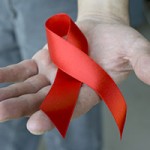 The field of behavioural science has been a burgeoning one over the last few years. The movement has been led by Richard Thaler and Cass Sunstein, whose book Nudge sent the theory into the mainstream. Such was the appeal of this approach, governments throughout the world started building their own ‘nudge’ units to try and gently ease citizens into more beneficial behaviours.
The field of behavioural science has been a burgeoning one over the last few years. The movement has been led by Richard Thaler and Cass Sunstein, whose book Nudge sent the theory into the mainstream. Such was the appeal of this approach, governments throughout the world started building their own ‘nudge’ units to try and gently ease citizens into more beneficial behaviours.
A new study conducted by UCLA is of great interest therefore, because it combines the theories of behavioural science with social media, and looks at how social networks and online communities can contribute to healthier behaviours amongst men at risk of HIV infection.
The study saw 112 homosexual men recruited via banner ads placed on Facebook and Craigslist. Of the participants, 60% were African-American, 28% were Latino, 11% were white, and 2% were Asian-American.
The men were randomly assigned to two Facebook discussion groups. The first of which was a HIV intervention group, whilst the second was a general health group. Each participant was then given two ‘peer leaders’ within their designated group. These acted like community managers for the group, engaging with each participant and so on.
The community managers in the HIV group also posted specific content on HIV prevention and testing, whilst the control group managers stuck broadly to general health related topics such as exercise and good diet.
Throughout the experiment, the participants were able to request home based self testing kits, whilst a survey was conducted at both the beginning and end of the 12 week period. The survey was designed to determine any behavioural changes amongst the participants.
It found a number of key findings:
- 95 percent of the intervention group participants voluntarily communicated on Facebook, as did 73 percent of the controls.
- 44 percent (25 of 57) of the members of the intervention group requested the testing kits, compared with 20 percent (11 of 55) of the controls.
- Nine of the 57 intervention group participants took the test and mailed back the test kits to receive their results, compared with two of the 55 control group members, suggesting a greater likelihood that the approach can successfully lead one to take an HIV test.
- The intervention group members chatted and sent personal messages with much higher frequency than did the control group members.
- African-American and Latino men who have sex with men, who are at higher risk for becoming infected with HIV compared with the rest of the population, find social networks to be an acceptable platform for HIV prevention.
- African-Americans and Latinos also find home-based tests to be an acceptable HIV testing method.
Hi Adi I enjoyed reading this in depth study of Craigslist and Facebook ads in social media. Just listening to a podcast on ipod now and the two guys are sharing their experience of Facebook ads in all its intricacies of framing people and where to send them.
Not really about ads so much as how support communities seem effective at promoting certain behaviours.
Seems a similar finding was discovered with smoking too.
http://www.sciencedirect.com/science/article/pii/…
Nice find, thanks Paul.